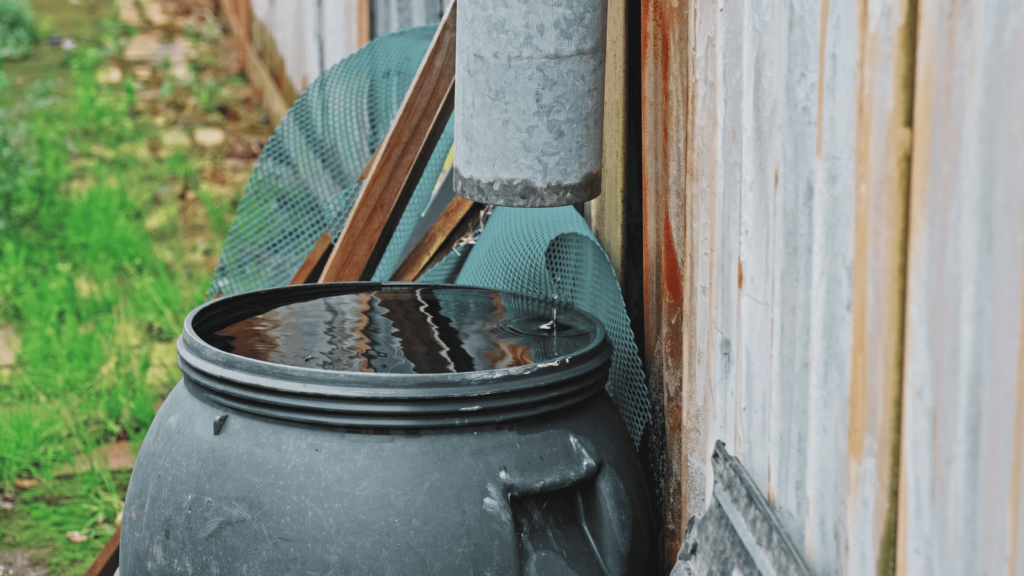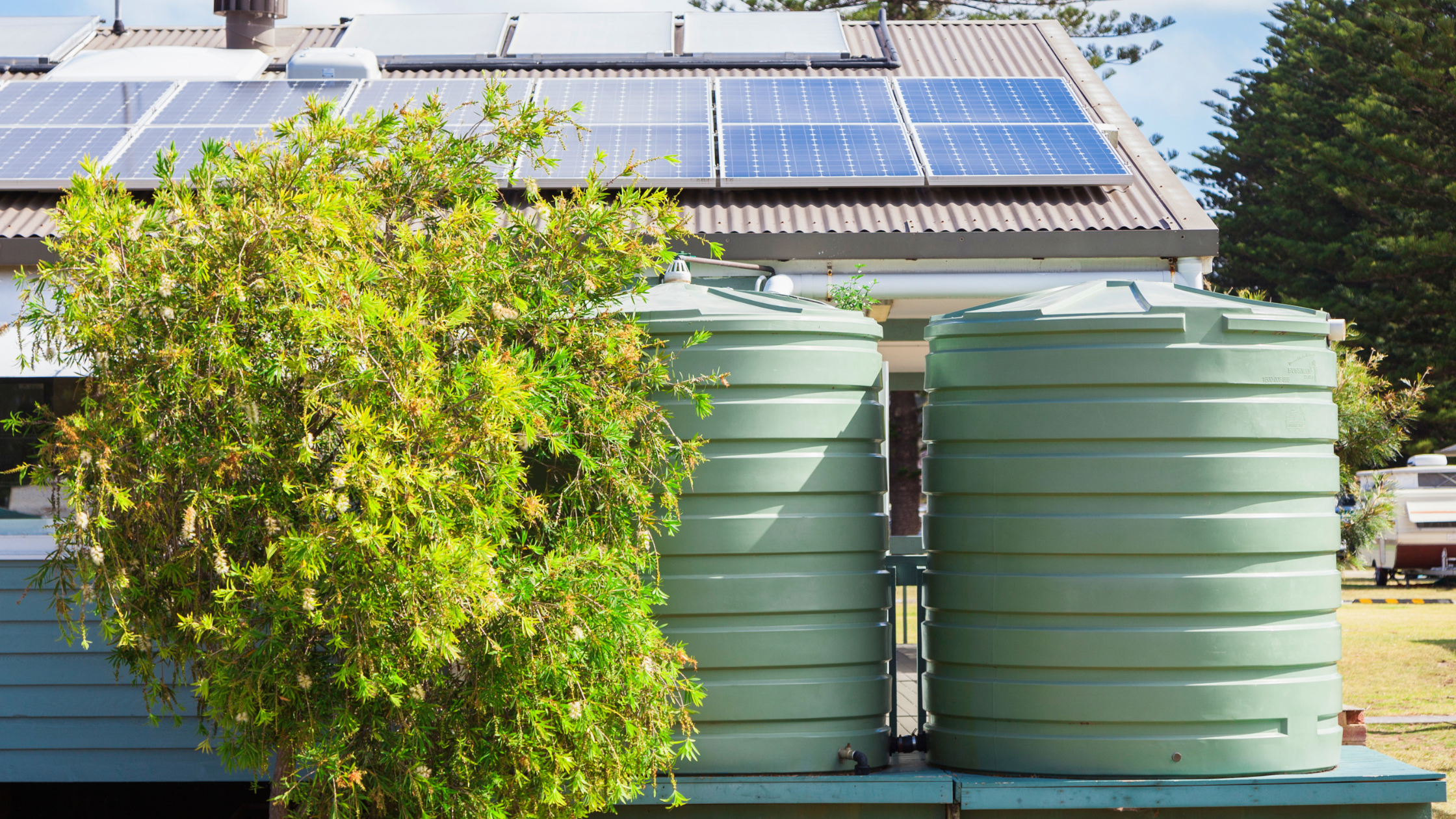Many communities across North America are experiencing dry summers, lower-than-average rainfalls, and severe drought. From 2000 to 2002, the average drought area increased 17% in the western United States, making many Americans acutely aware of water’s value. Harvesting water at home with a barrel or cistern can help reduce runoff, save money, and reduce energy demands. Implementing these systems in large facilities like sports venues can increase these benefits while lessening the strain on local water sources and infrastructure.
Quick look
- Rainwater can be harvested with rain barrels or cisterns.
- Dry collection systems use pipes directing water from gutters and downspouts, while wet collection systems use underground pipes.
- Rainwater harvesting can conserve groundwater, reduce energy use, limit water runoff, save money, and help plants grow.
- Installing rainwater collection systems in larger facilities like sports arenas can save water and money, reduce the strain on local water sources and infrastructure, and help facilities get a little greener.
What is rainwater harvesting?
Rainwater harvesting involves capturing rainwater and storing it for later use. Instead of letting rainwater pour into the gutters or down storm drains, it’s collected and used for irrigation and landscaping.
In residential settings, collecting rainwater can involve small containers, such as rain barrels or cisterns, typically hooked up to a house’s downspouts. When it rains, gutters funnel the rain into the downspouts, filling the barrels and cisterns with fresh rainwater. In these scenarios, the pipes directing the rainwater to the collection vessel will dry out after the rain has been collected, which is why they’re called dry rainwater collection systems.
Wet rainwater collection systems involve underground pipes from a building’s downspouts or water-collecting apparatus. The pipes feed into a cistern or collection vessel from beneath, staying wet even when not collecting rainwater.
Although we hear about rainwater harvesting most often in residential contexts, there’s a growing interest in large-scale rainwater collection systems for commercial applications.
How rainwater harvesting benefits residential and commercial spaces

Collecting rainwater provides a convenient source of fresh water for plants and other landscaping and offers many other benefits, like conserving groundwater, limiting runoff, saving money, and reducing energy demands. Applied on a large scale, these benefits can add up to a substantial environmental impact.
Conserves groundwater
All water has to come from somewhere. Harvesting rainwater and collecting it in rain barrels or cisterns can irrigate lawns, gardens, and other landscaping features instead of turning on the tap.
This helps conserve groundwater because many municipal water supplies are drawn from groundwater sources. Harvested rainwater takes the pressure off municipal water supplies and allows natural aquifers to replenish and refill. This is crucial, especially as natural aquifers worldwide risk running dry.
Reduces energy demands
Whether drawn from aquifers, reservoirs, or other sources, water must be pumped to water treatment plants, treated to remove harmful chemicals and bacteria and make it safe to drink and cook with, and pumped out to homes and businesses. All of this requires energy, and when you’re using that water to wash your car, that energy is wasted.
On the other hand, using harvested rainwater saves energy and keeps treated, potable water for its intended use. Some studies show that by using rainwater, single-family homes can save up to 75% of the energy needed to pump treated water.
Limits runoff
As water streams through city streets, it picks up garbage, harmful chemicals, oil, and other pollutants, which then get carried to local waterways. Runoff from lawns and gardens can also contain fertilizers that cause algal blooms, removing oxygen from waterways and harming fish and aquatic life.
The Environmental Protection Agency calls polluted water runoff “one of the greatest threats to clean water in the U.S.” Collecting rainwater limits the amount of runoff in lakes, rivers, and streams and also limits pollution.
Cost savings
If you’ve ever gasped at your water bill—especially in the summer months—you know firsthand how reducing municipal water use can also lower your bill. Collecting rainwater and using it for outdoor chores and irrigation might help you save up to $35 each month, depending on your area, water use, and rainfall level.
Plant support
Rainwater is perfectly tailored to help nourish the growth of plants and flowers. Rainwater is free from salts, minerals, and additives like fluoride, often found in municipal water systems. It has the perfect acidity level for plants and contains nitrates, a form of nitrogen well-absorbed by plants.
Integrating rainwater systems in sports venues

Household rainwater collection systems can help the environment and benefit your budget, and applying these systems to large-scale areas like sports venues can increase those benefits.
Sports venues like arenas and stadiums present the ideal opportunity to harvest rainwater due to their massive footprint and the large amount of this precious resource they use to maintain the facility.
Equipping an arena with a large-scale water harvesting system offers several different benefits, including:
- Low-cost installation
- Reduced water usage
- Lower water bills
- Demonstrating a commitment to environmentally friendly practices and sustainable design
Rainwater harvesting at sports venues also provides benefits to the city and surrounding community:
- Reduces runoff from areas around the venue
- Lessens reliance on local water sources
Brazil’s Maracanã Stadium is one facility that built water harvesting systems into its construction. The stadium contains 18 rainwater tanks, which collect rainwater from the roof. The rainwater is used to water the soccer field and flush the almost 300 stadium toilets, reducing external water needs by up to 40%.
Design firm Smith Seckham and Reid (SSR) says large-scale rainwater harvesting systems are standard practice in their sports facility designs. SSR says that they can be applied to builds of all ages: “New constructions are the best candidates for these systems due to the space and planning required. However, retrofitting existing structures, while more expensive, can also be beneficial. Ideal locations include areas with high rainfall, flood plains, or drought-prone regions where water conservation is critical.”
Bottom line
When we take care of our water sources, everyone benefits. By using rainwater harvesting systems in small-scale applications like rain barrels at home or large-scale applications like sports arenas, we can conserve energy, reduce pollution from water runoff, and even help gardens grow.
To learn more about the latest innovations in sustainable architecture, engineering, and design, subscribe to our newsletter!



1 comment